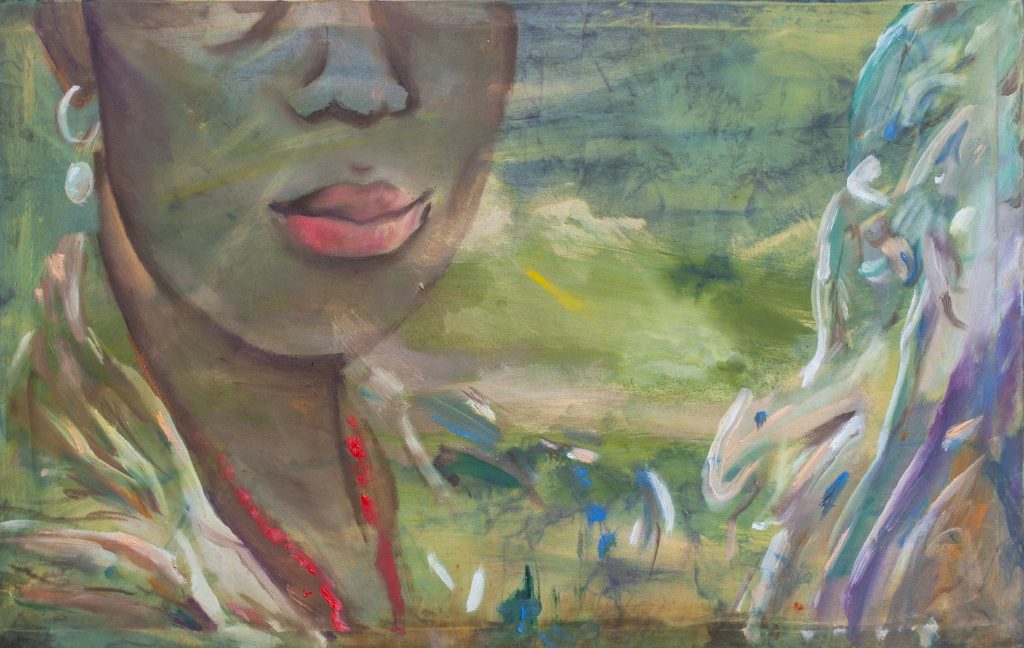
- ARAB NEWS
- 02 Jul 2025

Carla Chahrour Dubai
Emirati painter and multi-disciplinary artist Hashel Al-Lamki first came to public attention in Abu Dhabi in 2014 when he moved back to the UAE after receiving his BFA from Parsons School of Design The New School, in New York City.
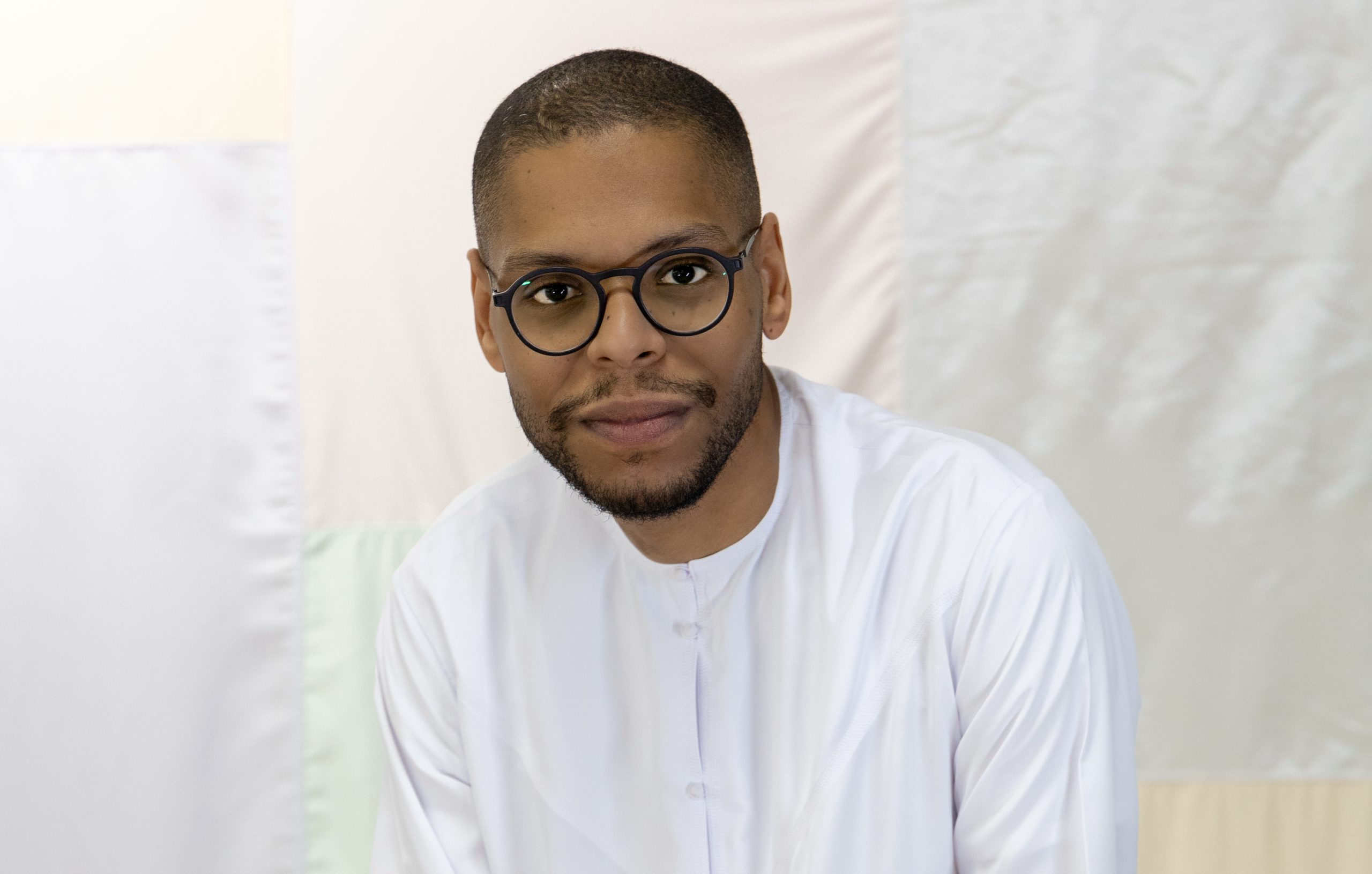 Painter and multi-disciplinary artist Hashel Al Lamki. (Photo: Noor Althehli/Courtesy:Tabari Art Space)
Painter and multi-disciplinary artist Hashel Al Lamki. (Photo: Noor Althehli/Courtesy:Tabari Art Space)Born in the shadow of the monumental Jebel Hafeet mountain in Al-Ain, Al-Lamki witnessed not only the industrial and architectural growth of the country, but also the social and cultural dynamics that followed the exponential development in the Gulf.
Al-Lamki returned to his homeland after he spent years in New York, Amsterdam, the Netherlands, and Taos, New Mexico where he immersed himself in solution-finding for post-consumerism waste.
These interdisciplinary and cross-cultural experiences have contributed to his artistic practice both conceptually and technically. His paintings are concerned with the legacies of the landscapes that surrounded him in Al-Ain and beyond.
He is one of the founding members and leaders behind the Abu Dhabi-based studio that is centered around contemporary art, Bait 15, which provides local artists a space to engage in critical dialogue. Al-Lamki’s paintings have garnered considerable attention and have been exhibited widely in the UAE and internationally, notably at the 16th Biennale de Lyon and with Beyond Emerging Artists with Abu Dhabi Art during the Venice Biennale. He has held solo exhibitions at Warehouse421 in Abu Dhabi, as well as at Foundry, and Jossa by Alserkal in Dubai. Most recently, his work was acquired by the Permanent Delegation of the UAE at the United Nations Educational, Scientific and Cultural Organisation (UNESCO) in Paris.
At East-East: UAE meets Japan Vol.5, Atami Blues, starting Nov. 3 – 27 the fifth edition of an exhibition series started by curator Sophie Mayuko Arni that aims to foster artistic dialogues between the UAE and Japan through artistic collaboration and exchange, in celebration of the 50th anniversary of diplomatic relations between the two countries – Al-Lamki will be showing examples of his most recent series of work, “Lucy.”
The series takes its name from one of the oldest known human ancestors, an Australopithecus afarensis specimen nicknamed “Lucy.”
The series of paintings narrates the changes that have been seen in the UAE since the federation was formed in 1971 through encapsulating the historical development of the pearl industry and registering the onward march of human activity but also what existed long before that.
It parallels the theme of the exhibition “Atami Blues” which brings forward the idea of shared narratives of the UAE and Japan surrounding blue seas and oceans.
Al-Lamki said: “My work is a lot about the geology and the trace of the historical data of the human race and the region especially. There is a lot of information that is accessible but maybe not known about the geology and how things have transformed and changed over the time.
“And at some point, there were some rivers in the Arabian Peninsula and different species that lived here. I’m always referring to the cycles and zooming in.
“Fast forward the shift in the past 50 years, like from the pre-oil to where we are today and, you know, kind of like looking at these cities and especially the pearl divers and the economy that was surrounding that culture.
“I also look at the social economic dynamics that were taking place in the region and men going out to catch pearls for three months on these harsh conditions. And then they come back and, there is a whole economy that goes behind it and its trade,” Al-Lamki added.
Al-Lamki’s work illustrates how aspects from different periods and cultures can be linked despite diverse chronological and geographical backgrounds.
While the lens through which the series was imagined concentrated on the relationship between the UAE and Japan and the many agreements that exist between them, it resounds with the overarching theme of the “movement of us as a species” by skilfully suggesting how areas and activities shift over time and circumstance.
Al-Lamki said: “I was looking at the history of the pearl and the oil and the luxury and the horrors and all of these things. And I was like, this is a concept that’s really beyond us. I need to zoom and dig deeper.
“There is this kind of narration through fragments of different frames about different stories and how these stories come to tell a full story about the human race over the past couple of million years,” Al-Lamki added.
Prior to the discovery of oil in Abu Dhabi in 1958 and its production, which constituted the turning point in the UAE region’s economy and transformed it into a land of sprawling shopping malls and high-rise towers, the pearl industry accounted for 95 percent of Abu Dhabi’s total revenue and was the region’s most important export commodity during the late 18th century.
Among the several factors that led to the decline of the pearl industry in the region was the spread of Japanese cultural pearling and their development of it into a global export.
The UAE’s transition from pearl to oil also marked a growth in the number of trade agreements between the two countries, such as the concession agreement for the Mubarraz and Dalma fields in 1967.
In light of finding such intersections between the two countries, Al-Lamki immersed himself in the largely forgotten past of pearl trading, recalling the days when merchants made their livings from the sea, trimmed their sails, and clapped their hands while singing old pearl divers’ songs.
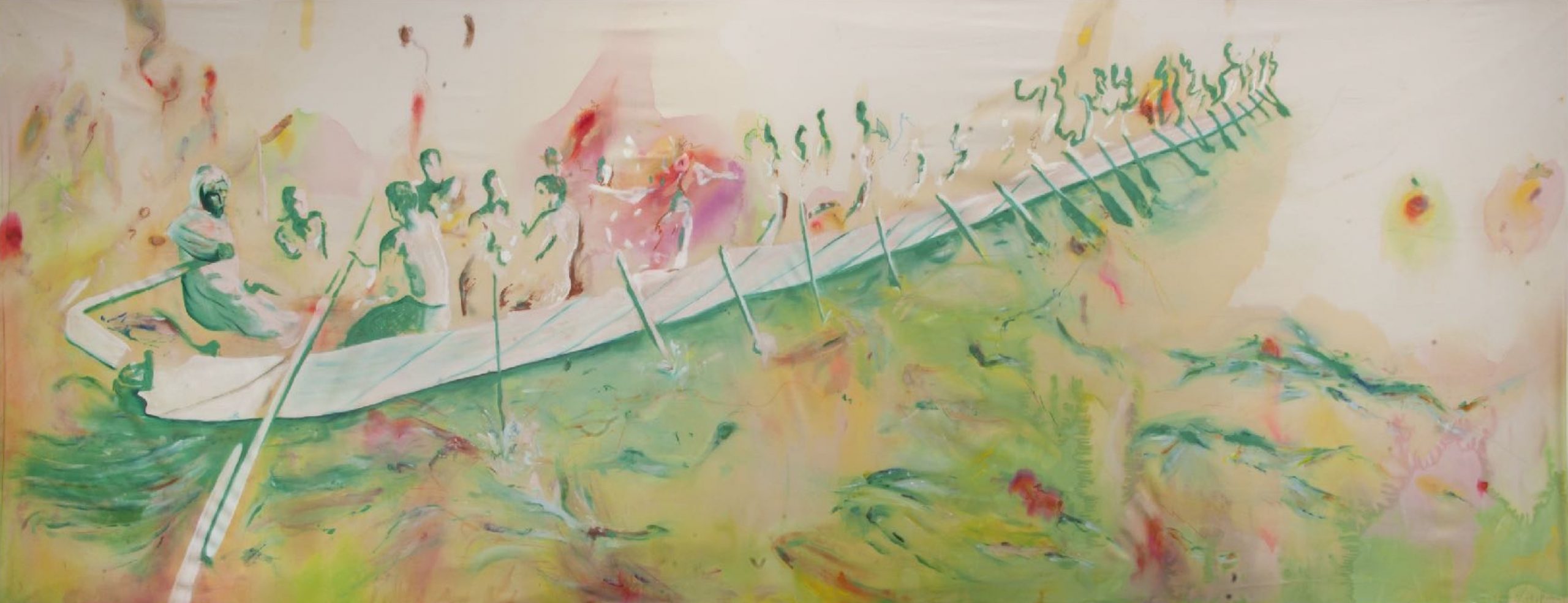 Painting from Hashel Al Lamki’s artwork series titled “Lucy.” (Supplied)
Painting from Hashel Al Lamki’s artwork series titled “Lucy.” (Supplied)This is made apparent in one of the paintings, which shows sailors or divers leaving the shore and heading out on a journey with almost abstract brushwork of horizons, waves, and coastlines that are rendered in saturated pastel hues that read as part mystical, part realistic, and unavoidably manifest the inherent connection to the country’s history.
The paintings in the series are made using freshly formed pigments derived from natural resources in the Middle East and North Africa region and are painted on Haitian cloth and pillowcases.
His work comprehensively narrates a story through correlating the fluidity of the sea with loosening brushworks, moving from abstraction to figurative. This arrangement makes the paintings in the series as thematic as they are chronological, each attesting to a different part of the narrative.
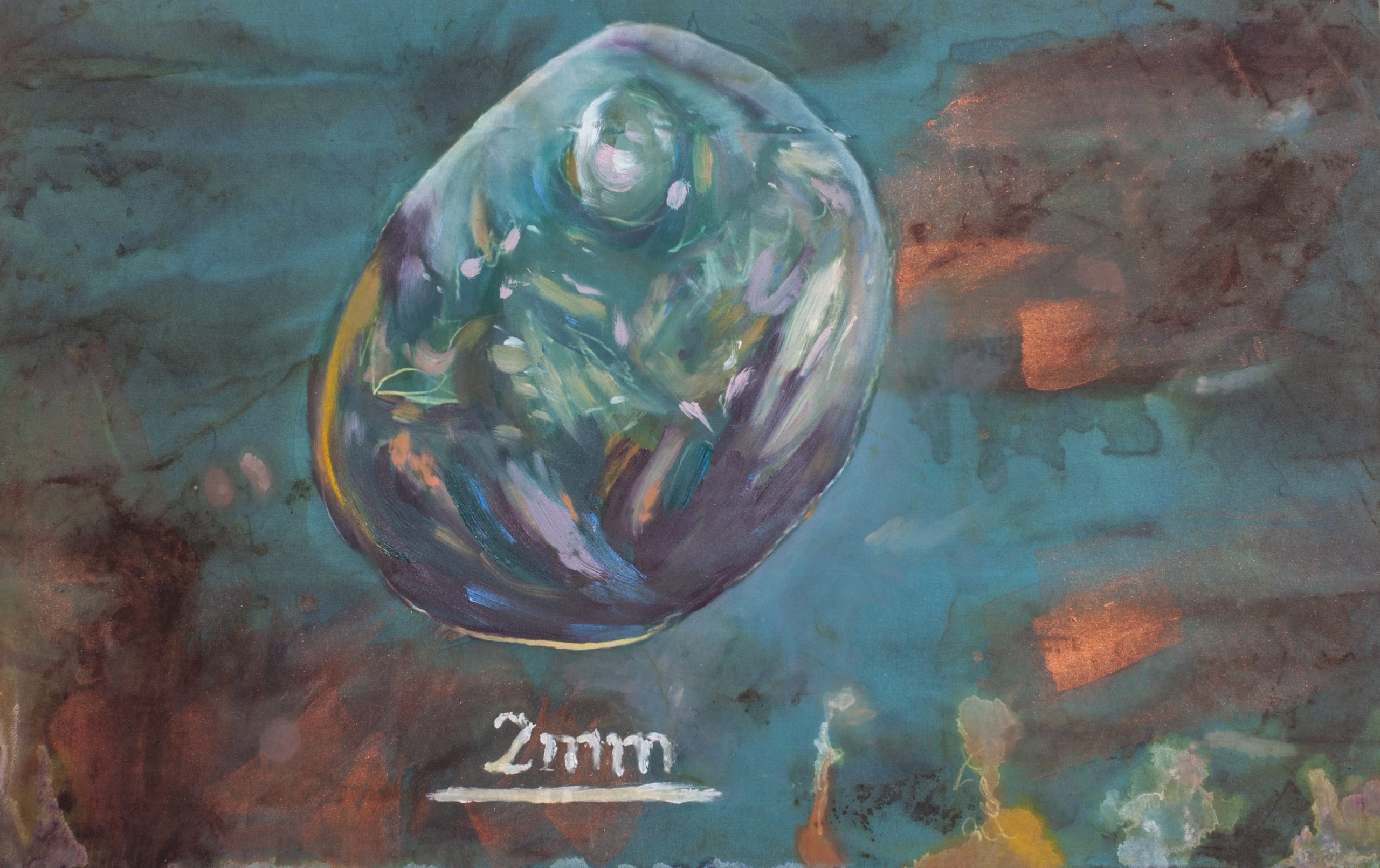 Painting from Hashel Al Lamki’s artwork series titled “Lucy.” (Supplied)
Painting from Hashel Al Lamki’s artwork series titled “Lucy.” (Supplied)Al-Lamki is well-versed in art history, as demonstrated by several of his pieces in the series which contain fragments from renaissance paintings that are uncannily charged with spirit force from that country’s geologic and social terrain.
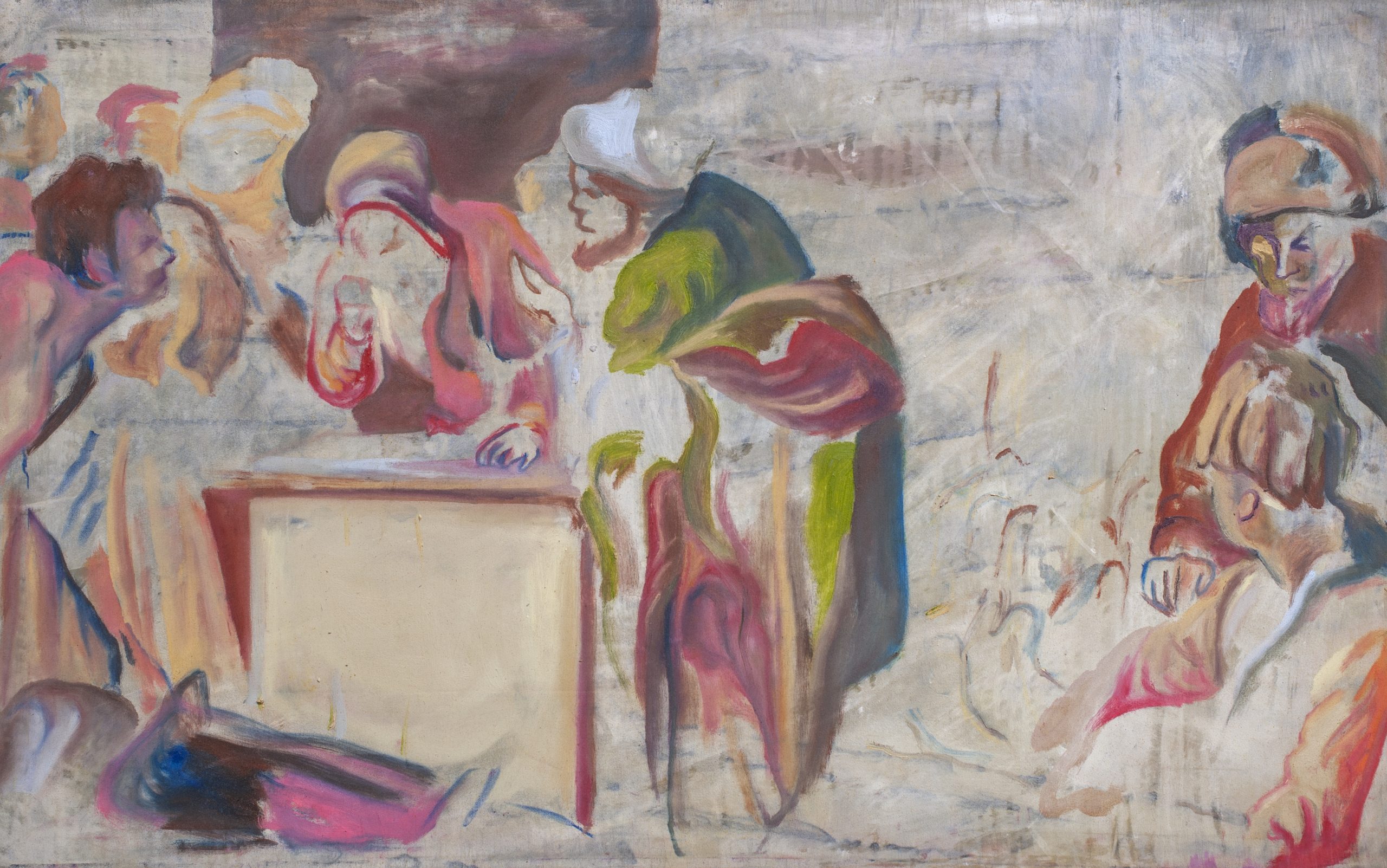 Painting from Hashel Al Lamki’s artwork series titled “Lucy.” (Supplied)
Painting from Hashel Al Lamki’s artwork series titled “Lucy.” (Supplied)One of the most mysteriously moving pieces in the show depicts a woman holding her windswept hair with one hand, the other resting on her thigh, with one knee slightly bent, alluding to Sandro Botticelli’s 1485 painting, “The Birth of Venus.”
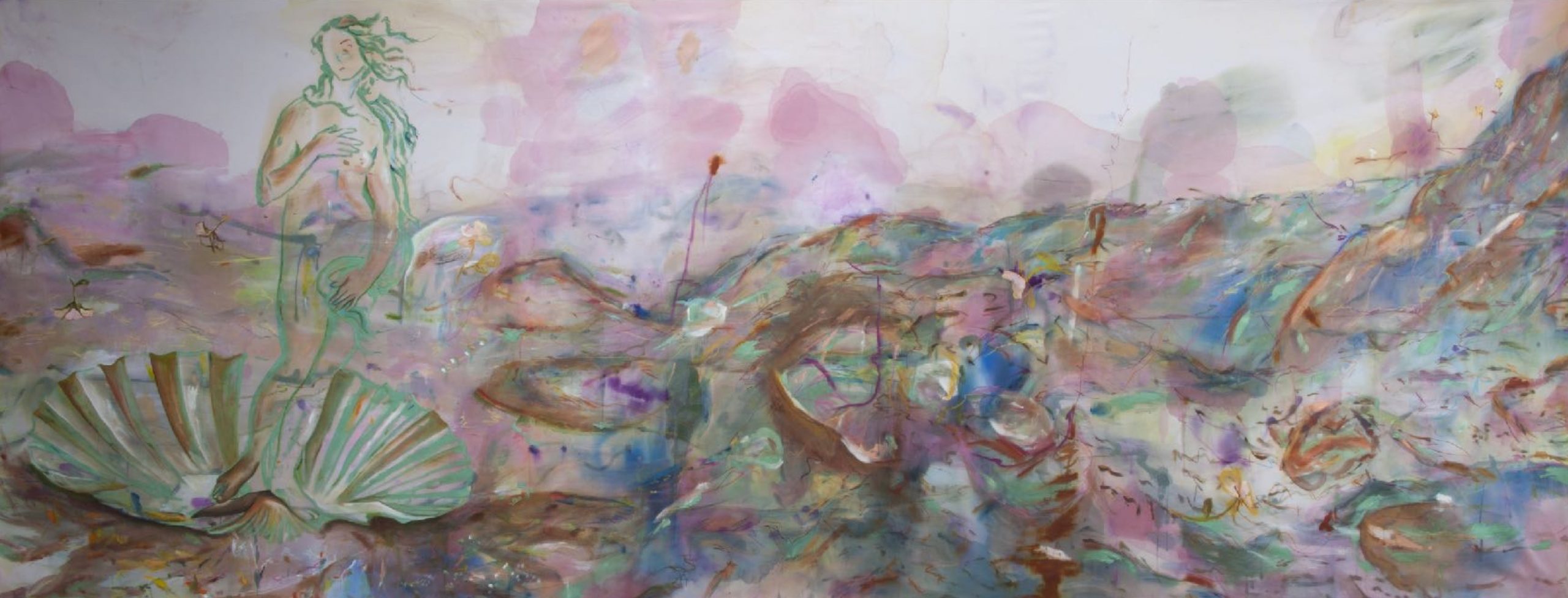 Painting from Hashel Al Lamki’s artwork series titled “Lucy.” (Supplied)
Painting from Hashel Al Lamki’s artwork series titled “Lucy.” (Supplied)This painting encapsulates the relationship between humans and the environment, while reinforcing his sense of belonging to his hometown through the inclusion of sweeping views of mountain ranges that represent the Jebel Hafeet mountain.
“When I talk about factual statements about what happened to the human race, some of it sometimes becomes very mythical. I like these kinds of dreamlike and poetic aspects. Venus resembles the femininity and the celebration of the pearl, except by this goddess who is kind of coming out of the mountains.
“And it’s a modern adaptation to the painting. I refer to the mountain that I grew up in, which makes it personal yet a narrative that is accessible to the public,” Al-Lamki added.
The artist has also incorporated an audio component, made with the Japanese sound artist Yoichi Kamimura, mixing chants from pearl divers and textures of different elements of water.
While “Lucy” reverberates the history of the pearl trade and pearl diving in the UAE, and attests Al-Lamki’s deep communion with his homeland, the fluidity, emotional expressiveness, and sense of action present throughout these works showcase how fragments, both familiar and unfamiliar, can be used to create a historical narrative that exerts a sense of imagination about how humans have shifted over the course of millenniums.